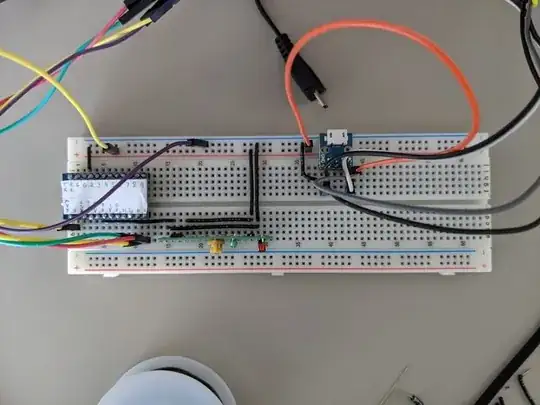I'm trying to power an arduino and a few modules (RF receiver, two servos, and a laser diode) through one power supply.
I get jittery/unresponsive servos when hooked up in the following configuration:
- power supply goes to usb breakout, joins with top + and - rails, powers everything (tried
- all grounds go to top - rail
- black/grey/white wires going off right side are power/ground for the servos
- red, green, yellow wires going off left/top side are signals to the servos/laser
- purple wire going off left/top is ground for the laser
If I remove the orange wire (usb breakout to + rail) and plug another power supply into the Arduino, the poor performance disappears and everything works nicely.
Since my power supply is 2.5A, I doubt that I don't have enough power for this setup. This leads me to believe that the Arduino/receiver side of the circuit is making the voltage unstable so the servos misbehave. Is there a way I can isolate these two parts of the circuit (diode, capacitor?) so that I can power the whole setup with one cable?
Components:
- Arduino pro micro (5v)
- RF Link Receiver (WRL-10532, 434 MHz)
- Servo (ROB-09065, sub-micro)
- Laser diode (5V, 20mA)
- Micro USB breakout (1A)
- USB Micro power supply (5.1V, 2.5A)
